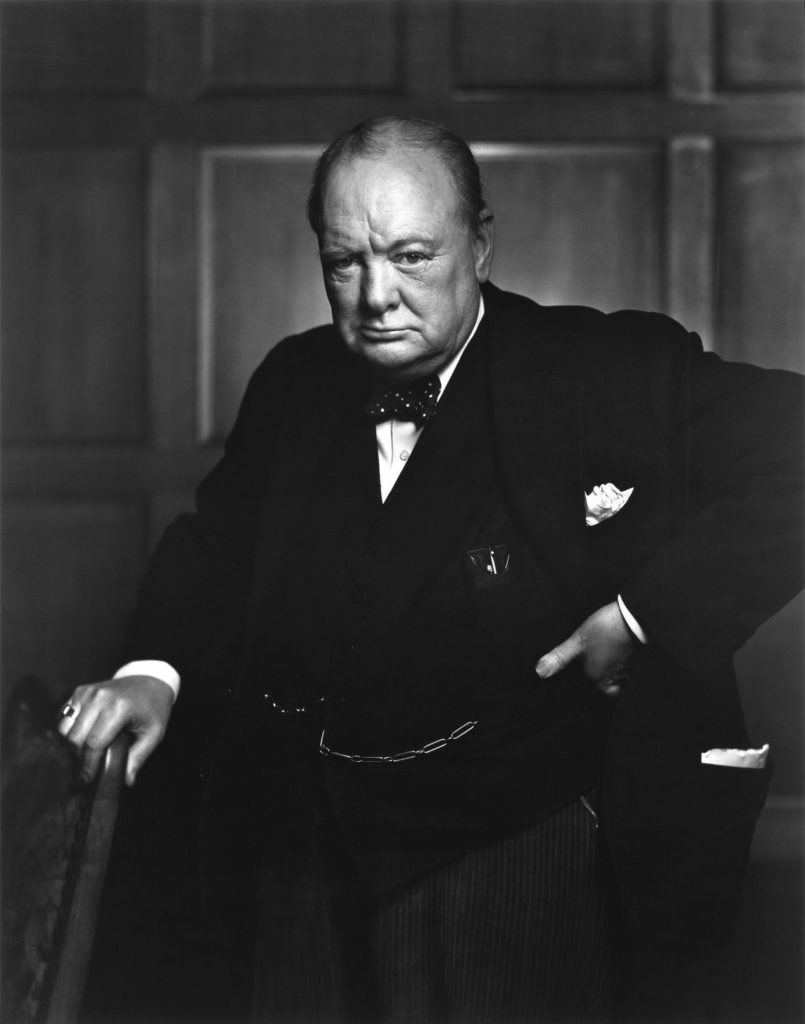
Letter by one of the most famous leaders in history, who was a writer, historian, politician, diplomat, military leader, gifted speaker, the architect of the victory over Nazi Germany, and British Prime Minister, Sir Winston Churchill.
The letter was sent from his office in 1927, when he served as the Chancellor of Exchequer in the British Government and is addressed to Mr. Curtis Brown, who was the owner and founder of one of the largest publishing agencies in England.
The letter deals with the publishing of his books. In the body of the letter, Churchill informs Brown that he will give him the materials for the fourth volume of his well-known series of books The World Crisis not before September 1928 (the volume was eventually published in 1929). In addition, Churchill informs Brown that he does not remember promising Brown that he would write his memoirs, as Brown claims – and therefore, he sees himself free from such a promise. Yet, he adds that when it becomes possible, he will give it his full attention. (Churchill’s memoir was eventually published in 1930 by Thornton Butterworth and was titled My Early Life ).
At the end of the letter, Churchill expresses his joy over Brown’s correspondence with the writer and sceenwriter Ray Long.
[1] leaf, 18×23 cm, ink on the official stationery of the British treasury, typewritten and signed in black ink.
Very fine condition, a fold crosswise and lengthwise, framed.
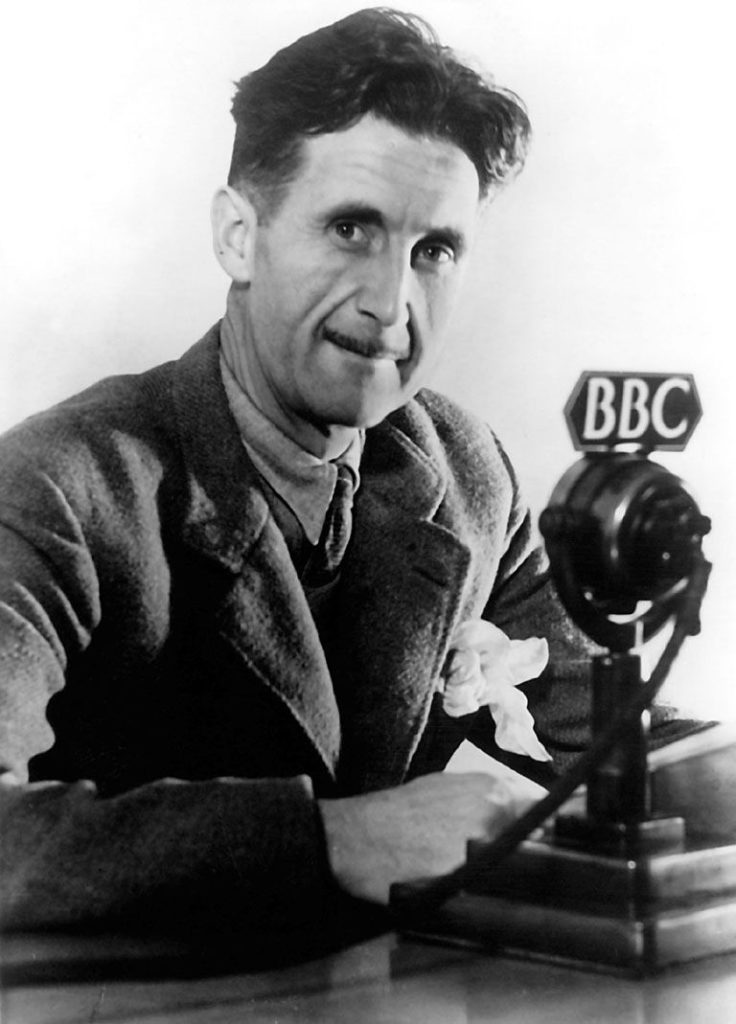
Letter by the well-known English writer and journalist George Orwell, written when he was staying at an isolated farm on an island near Glasgow in Scotland, where he wrote the well-known book 1984 . The letter before us was written during exactly the period in which he wrote his book 1984 !!!
In the letter, Orwell apologizes for his late response and sorrowfully rejects an offer to deliver a speech, due to the problematic location of the isolated island.
George Orwell, pen name of Eric Arthur Blair, (1903-1950), was one of the most influential writers of the 20th century. He became famous mainly after publishing the books Animal Farm and 1984 . His books significantly affected the political discourse in the West. Expressions he coined include “Big brother,” “War is peace,” “Freedom is slavery,””Ignorance is power.”
[1] leaf, 20×25 cm. Ink on paper, handwritten and signed in black ink. Very fine condition. 3 folds crosswise and one lengthwise, framed.
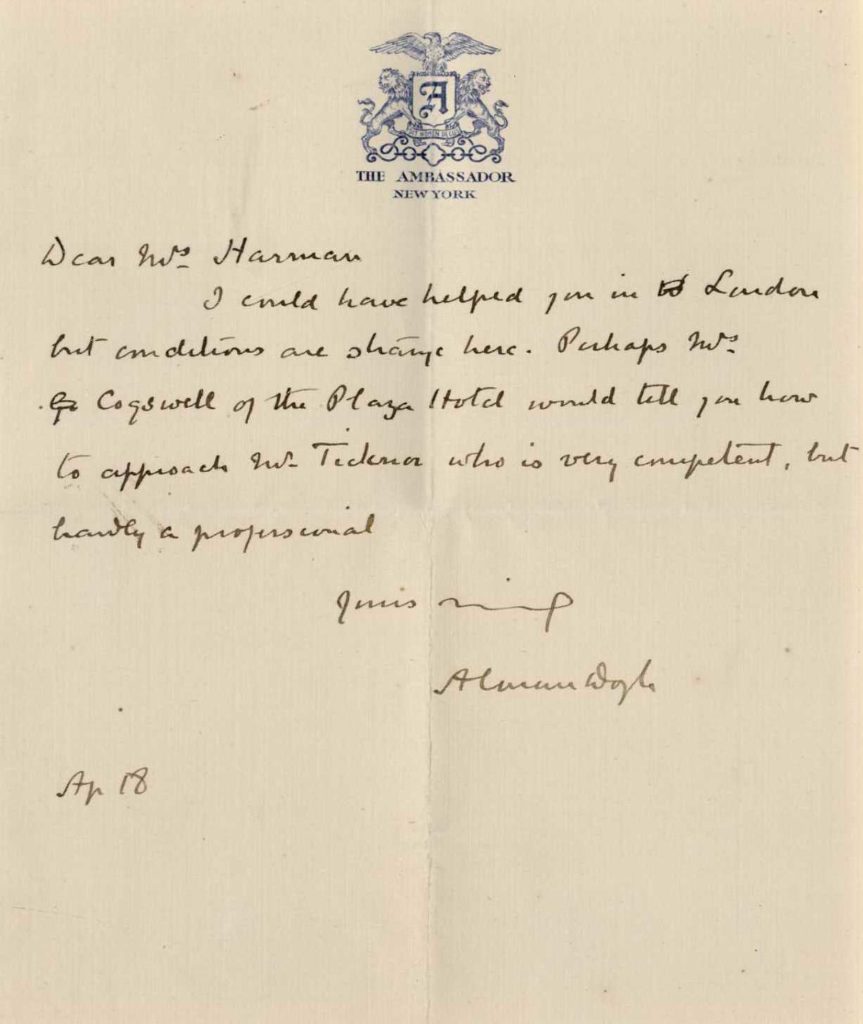
Conan Doyle (1859-1930) was a Scottish writer best known as the creator of the well-known figure of the detective ‘Sherlock Holmes.’ He believed in spiritualism, and even advocated the method and gave lessons about it. Before us is a letter addressing his belief in spiritualism in which he refers a woman to a man named Ticknor for spiritual consultation. The letter was sent from the Ambassador Hotel in New York to Mrs. Herman, also in New York.
[1] leaf, 16×13 cm, English, ink on the Ambassador Hotel’s official stationery, autograph signed in black ink. Enclosed is an original envelope and a typewritten story by his dauther Lady Conan Doyle on a leaf that was sent to the addressee and an additional card with two lines handwritten. Very fine condition, a fold crosswise and lengthwise, framed.
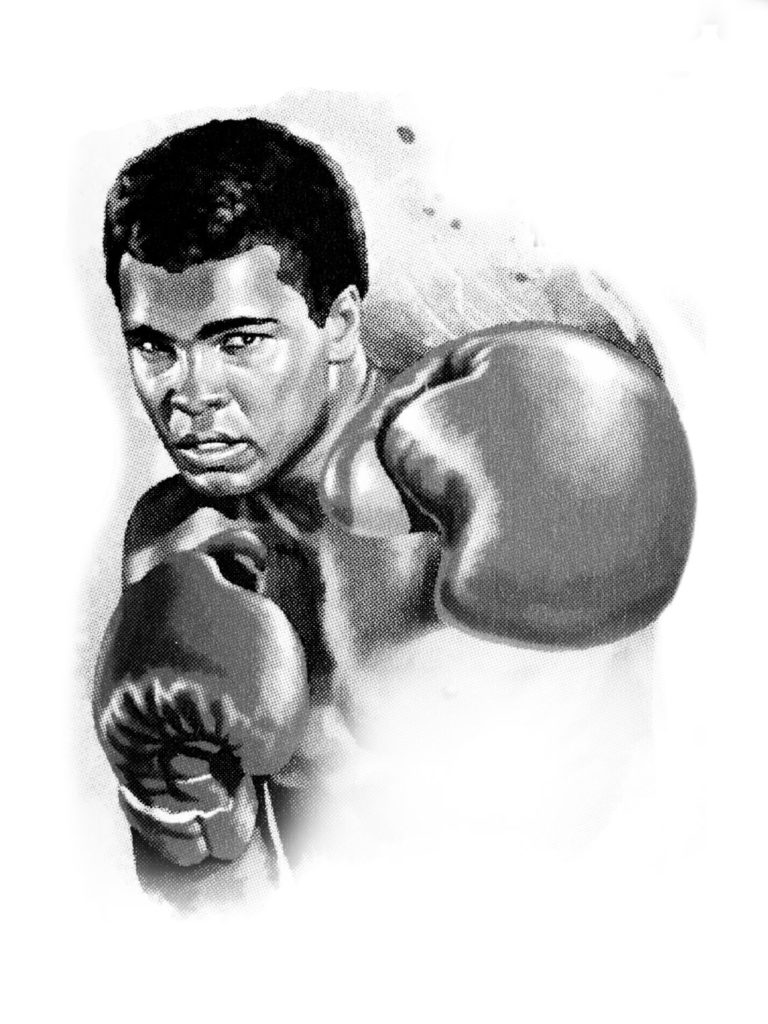
“Love is the net where hearts are caught like fish”
This well-known quote is by the person who was defined more than once as the greatest boxer of all time – Muhammad Ali (1942-2016), who was born Cassius Marcellus Clay Jr. and changed his name to Muhammad Ali when he converted to Islam in 1964. He developed a career as one of the leading heavyweight boxers in history.
This letter was written in 1983, approximately two years after he retired from professional boxing.
It is full of words of faith in G-d and the inspiring aforementioned quote appears at its end. It is addressed to the Catholic church of St. Mary and refers to King David and King Solomon and their wisdom.
[1] leaf, 28×21 cm. Ink on a sheet of Muhammad Ali’s official stationery. Signed autograph. Very fine condition. Two light folds crosswise. Framed.
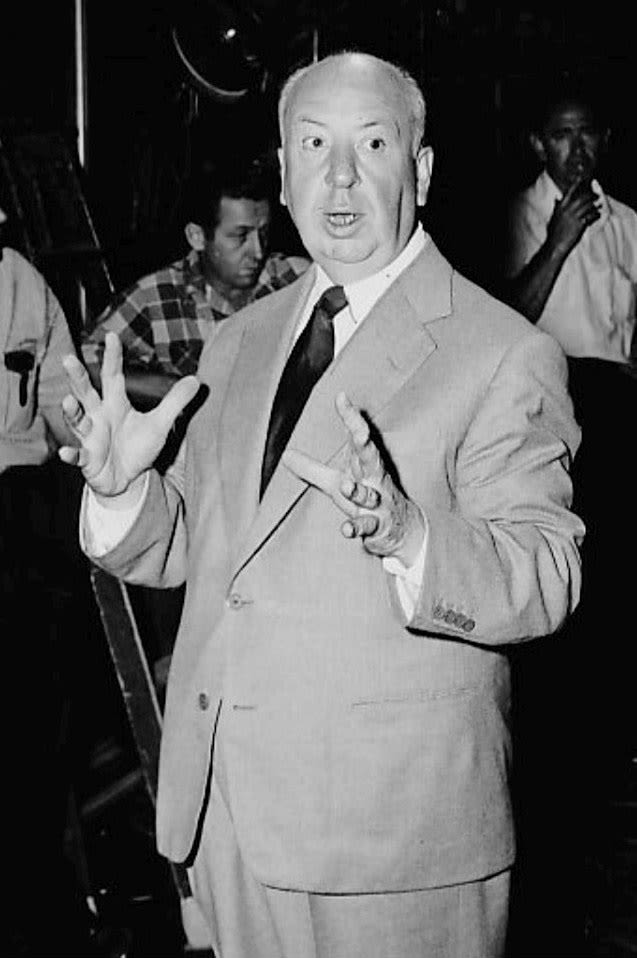
Letter with a nice, impressive signature in fountain pen by one of the greatest directors in history. Sent to Ed Sullivan’s assistant and right-hand man with an apology from Hitchcock for not being able to attend the show’s eighth birthday .
The letter was sent from Hitchcock’s office at the Warner Brothers’ studios to Carmine Santullo, who was staying at the time at the Hotel Delmonico in New York (which was later bought by Donald Trump and became Trump Park Avenue).
Sir Alfred Joseph Hitchcock (1899-1980) was a British film producer and director. He was considered one of the greatest film directors of all time. He was known as the “master of suspense and thrillers.”
Ed Sullivan (1901-1974) was an American television broadcaster. He became famous during the 1950s-1960s.
[1] leaf, 21x27cm. Official stationery of the Warner Brothers Studios, typewritten and signed in black ink. includes the envelope. Very fine condition. Two folds crosswise. Framed.
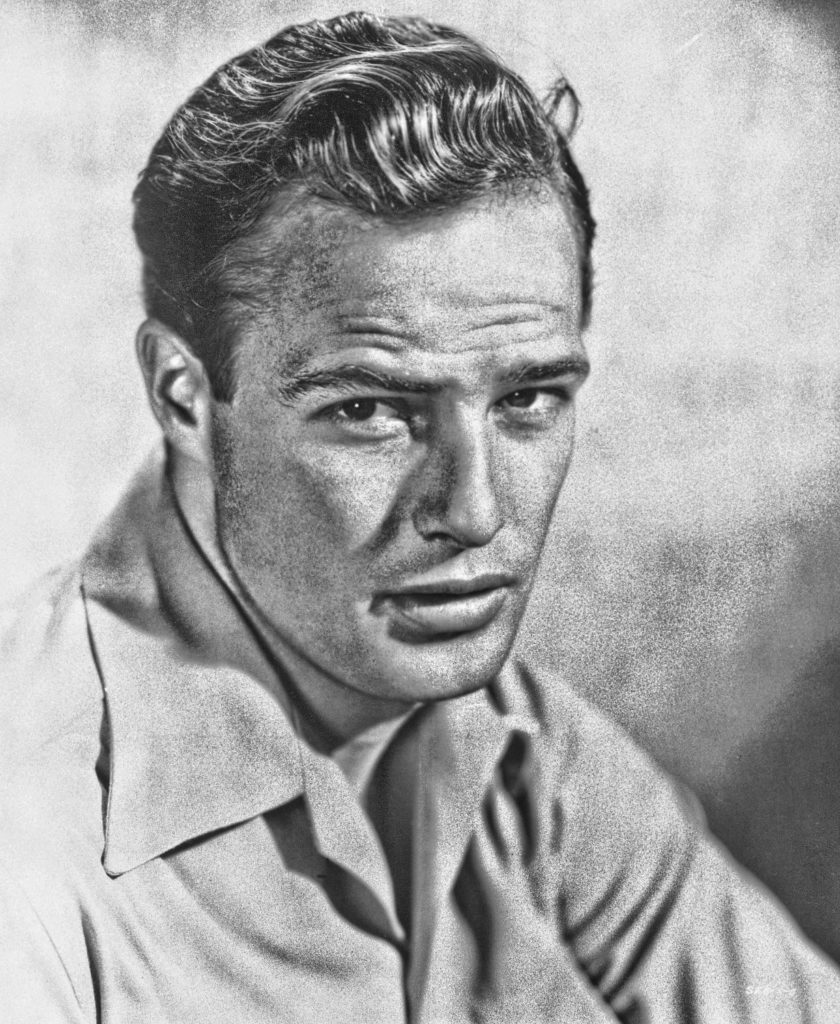
During his impressive acting career, Marlon Brando won two Oscars and played various roles in dozens of different movies. According to many, he is considered one of the greatest actors of all time.
In the letter, Brando appeals to the governor of French Polynesia with a request to build a small airstrip on the island of ‘Teti’aroa” which he owned, and informs him that the cost will be between 4-6 million French Francs. The airstrip was indeed built.
[1] leaf, 27×21 cm, written in French, ink on paper, typewritten and signed in blue ink. Very fine condition. Framed.

This letter was written about a fortnight after the members of Apollo 11 team, headed by Armstrong, were released from the solitary confinement which they had entered when they landed on Earth after their successful journey to the moon. The date noted at the beginning of the letter is August 28. The astronauts, Armstrong among them, left solitary confinement on August 12.
The letter is addressed to George L. Coleman. In the letter, Armstrong thanks Coleman for his letter and coveys his best wishes for his first wedding anniversary, also wishing him success in the future.
Neil Alden Armstrong (1930-2012) was an American astronaut, test pilot and a naval aviator who became famous due to his being the first man to walk on the moon. After the landing on the moon, he set his left foot and then his right foot on the moon and then said the sentence that will be remembered for generations: “That’s one small step for [a] man, one giant leap for mankind.”
[1] paper leaf. 25×19 cm. English, official NASA stationery, typewritten and hand-signed by him. Very fine condition, two light folds crosswise, framed.
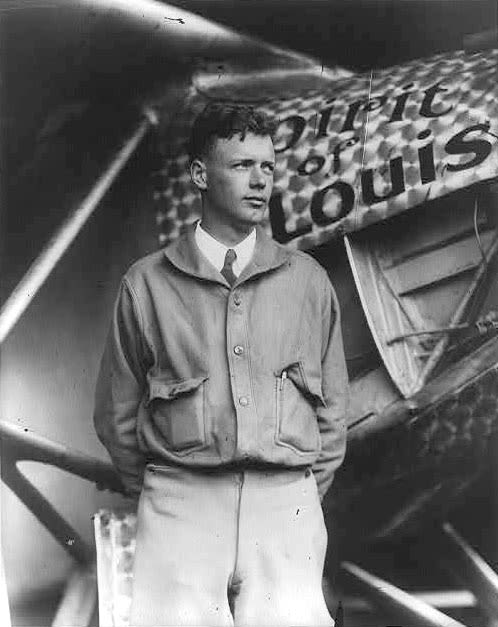
Fascinating letter from Lindbergh about his abstaining from the media and interviews.
Beginning in the 1940s, Lindbergh refused to be interviewed by the press, trying to live the most quiet life possible. Before us is a letter of complaint sent by Lindbergh to the French journalist Louis Castex. This journalist had told Lindbergh he was thinking of writing a book about central events in aerial history. Lindbergh had trusted him and invited him to his house in Switzerland where they held a long conversation. Castex adapted the conversation and turned it into a long journalistic interview which he published under the title “Lindbergh Breaks a Silence of 30 Years” in the Paris Match . Having seen the interview in the paper, Lindbergh sent this letter to the interviewer, expressing his anger. He notes that he always tried to help scholars and writers with their research; yet he has never agreed to cooperate with sensation-chasers.
The American Charles Lindbergh (1902-1974) was the first pilot to fly a solo trans-Atlantic flight. He flew from New York to Paris in 1927 in his well-known plane, the “Spirit of St. Louis.”
[1] leaf, 20×24 cm, English, ink on paper, typewritten and signed in black ink.
Very fine condition. Fold mark crosswise and lengthwise. Framed.
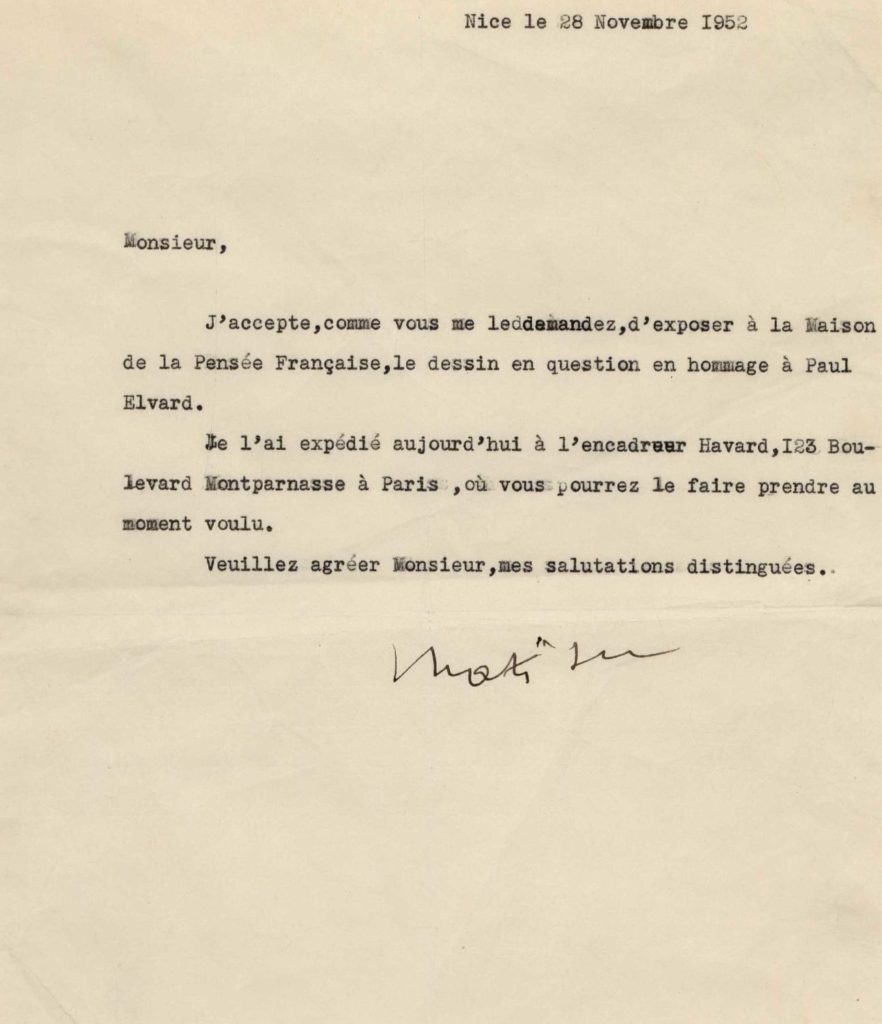
Letter in French sent by artist and sculptor Henri Matisse, considered one of the greatest artists of the 20th century, from Nice, to an unknown person with whom he corresponded to show him one of his paintings.
Matisse wrote (free translation): “Sir, I agree to your request to display the painting as a tribute to Paul Alvar (a French poet and artist) at Maison de la Pensée Française (a Paris museum). I will send it today to Hubbard (name of a framer), who will frame it at his Paris place of business, where you can pick it up at your convenience. Please accept my sincere feelings of respect.”
[1] leaf, 19×22 cm. Ink on paper, typewritten and signed in black ink. Very fine condition, minimal creases, fold crosswise and lengthwise, framed.
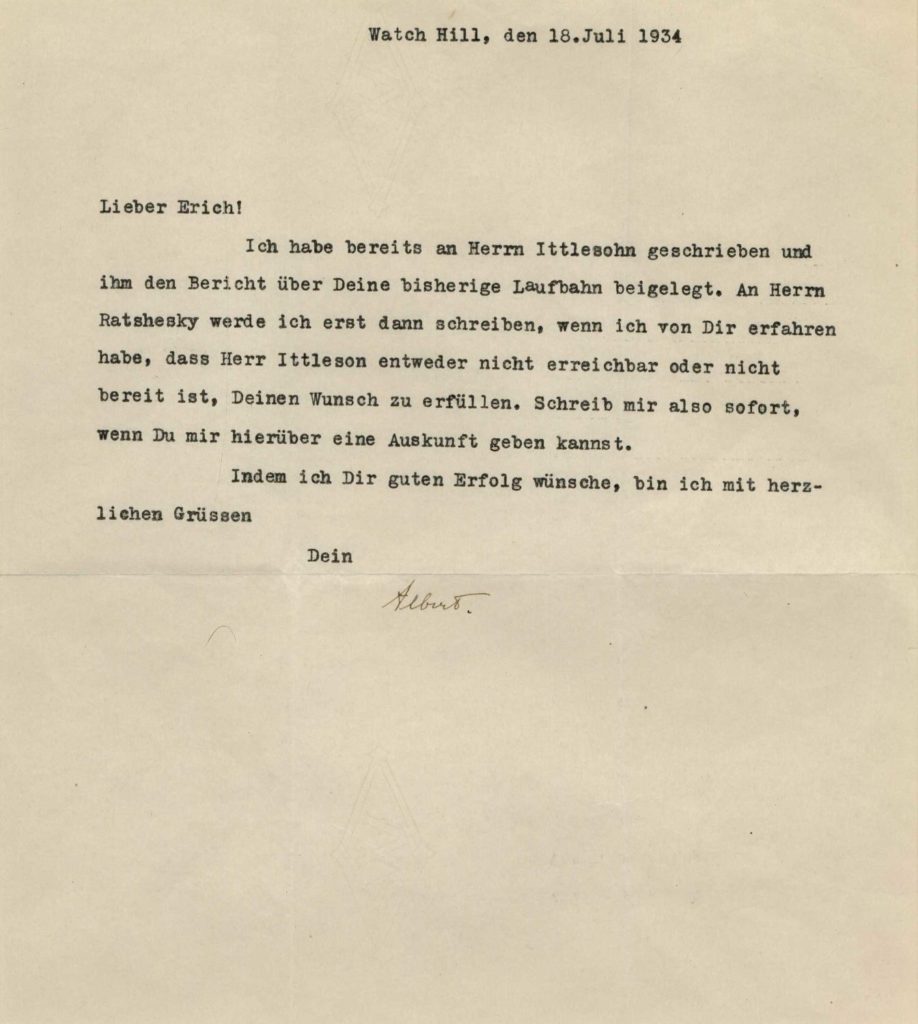
Short letter in German by the renowned Jewish physicist, Albert Einstein, in which he tries to assist one of his relatives to acclimatize to the United States after fleeing Germany as a refugee. 18.7.1934.
The letter was sent by Professor Einstein from his summer home in Rhode Island, and it is addressed to “Dear Erich,” which is none other than Erich Marcus (1901-1990), his relative. In it, Einstein attempts to help Marcus find work in the United States.
[1] leaf, 21×23 cm, typewritten and signed in black ink, as simply “Albert.” Very fine condition, one fold crosswise and two folds lengthwise, framed.
Rare signature style for Einstein which mainly appears in his letters to close family.
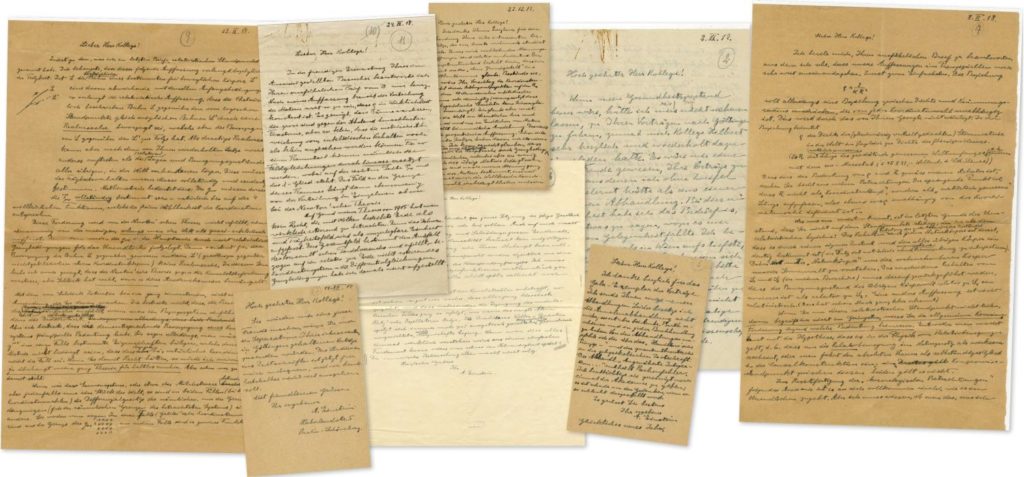
Fascinating correspondence on physical science between Professor Einstein and his colleague Dr. Gustav Mie after the latter decided not to be swept away by the dark antisemitic current of the times, but to proceed with pure scientific spirit specifically to deliberate, question and listen, in opposition to the majority of scientists of his generation.
The correspondence includes 13 letters between Einstein [8] and Mie [5] in which Einstein convinces his colleague about the correctness of the Theory General of Relativity.
The following correspondence between Albert Einstein and Gustav Mie (who at that time was full professor for experimental physics in Halle, Germany) offers its reader a unique chance to witness the dawn of General Relativity (GR) and the hurdles which this new theory had to overcome to gain acceptance among physics faculty. It illustrates Einstein’s efforts and struggles to convince and educate his fellow colleagues, some of whom remained highly skeptical of this groundbreaking discovery. But they also show us how Einstein navigated the path of correcting Gustav Mie’s misunderstandings without hurting his feelings or damaging their good relationship.
Before discussing the letters, we will review the circumstances under which they were written. Starting in the year 1917, this correspondence took place less than two years after Einstein unveiled his general theory of relativity. This theory revolutionized our understanding of gravity, inertia and mass.
The new concept of curved space-time required a high degree of abstraction from Einstein’s contemporaries. As a result, two groups of physicists emerged in Germany, roughly split among theoreticians and experimentalists.
While many colleagues, especially theoretical physicists, embraced Einstein’s new theory and started to contribute to its further development by e.g. searching for possible solutions to the basic Einstein equations, another group, consisting mainly of experimentalists, vehemently rejected GR. This second group was led by Philipp Lenard, a former Nobel prize winner who later became an active Hitler supporter and anti-Semite. The rejection of General Relativity paved the way to the creation of the so-called “Deutsche Physik” (German Physics) movement during the Nazi period, which disparagingly labeled the work of Einstein and other theoretical physicists of that time as “Jewish physics.”
What was Gustav Mie’s role in this debate? Mie was at the time of the correspondence a well-known experimentalist, who shared some of the skepticism of his colleagues. However, he actively sought out Einstein and tried to explain his difficulties and to understand Einstein’s viewpoints in these letters. This is the reason why Einstein’s responses are written in a very polite and cordial manner and why both scientists met personally to further discuss aspects of GR. We can presume that these written and oral discussions greatly influenced Mie and enabled him to publish a textbook about General Relativity later in 1921. Interestingly, during the Nazi period Gustav Mie became a member of a liberal university opposition group in Freiburg, Germany.
So what are the main topics of discussion between Einstein and Mie? One of the major initial disagreements between them lies in Mie’s preference for a preferred set of coordinates in which our universe should be described. From his point of view, an adequate theory of gravity should fix the structure of space-time to be flat asymptotically far away from any matter. However, these ideas contradict key axioms of GR, which are that the structure of space-time is determined exclusively by the matter content of the universe and that no preferred coordinate system exists. Einstein himself was keen to at least allow the equations of General Relativity to have a largely flat and static Universe as one of possible solutions. This is why he refers to the famous λ*gµν term in his letters, an addition to the original equations which he introduced in 1917.
This term counteracts the forces of the gravitational masses which, according to the understanding of that time, alone would force the contraction of our Universe on asymptotically long time scales. Thus, λ*gµν allows Mie’s favorite view of static global space-time to be at least mathematically feasible. Einstein himself later regretted introducing this term to his theory and even called it his “biggest blunder” after Edwin Hubble discovered the expansion of the Universe in 1931.
Here, the reader should make a step back from the correspondence and humbly realize that the questions of the nature and origin of the cosmological constant λ, which these two brilliant physicists touched already more than a century ago, remain one of the greatest unsolved mysteries of cosmology up to this day. In 1998, scientists discovered that our Universe is undergoing a phase of accelerating expansion through observations of distant supernovae. This new observation, which was honored by the Nobel prize in physics in 2011, can only be explained in terms of the λ parameter having a small positive value. Today cosmologists believe that a yet unknown substance, called “dark energy”, is responsible for this cosmological constant.
What would Einstein and Mie think of these recent findings? Would they congratulate each other for raising these questions long before any experiment could test their philosophical assumptions? We can only study their thoughts and feel connected to them through the years, not least because of preserved letters and correspondences like these.
For a historian, these letters also give hints about the broader, not physics-related circumstances in which they were written. The Great War was ravaging in Europe and even thinkers like Einstein could not close their eyes on its impacts. Einstein’s hope that he and Mie may finally meet during happier times when trains would again be used for private trips and not for troop transports show us how desperate people became at that time after years of suffering and war.
Gustav Mie and Albert Einstein survived the First World War unharmed, but one of their colleagues, a brilliant physicist and author of first exact solutions to Einstein’s equations whom Mie references in one of his responses, Karl Schwarzschild, died in 1916 due to an illness which he developed while in the trenches on the Russian front.
The collection before us came from Dr. Mie’s estate, so that the letters from him to Einstein are drafts he wrote for himself at first, and after he decided on a final version, he copied them onto blank sheets of paper and sent the letters to Einstein (except for letter 12).
1: From Gustav Mie 30.5.1917, [1] leaf paper, 30×23 cm, includes the envelope. Written on the blank side of an ad. Very fine condition.
2: From Albert Einstein 2.6.1917, [1] leaf paper, 21×27 cm. Folded with writing on three of the sides, fine-very fine condition, fold marks, stains and perforation marks.
3: From Albert Einstein 14.12.1917, postcard 9×14 cm, very fine condition.
4: From Albert Einstein 22.12.1917, postcard 9×14 cm, very fine condition.
5: From Albert Einstein 29.12.1917, postcard 9×14 cm, very fine condition.
6: From Gustav Mie 4.2.1918, [5] leaves, written on both sides, 21×16 cm, fine-very fine condition, many comments and erasures.
7: From Albert Einstein 8.2.1918 [1] leaf written on both sides, 33×21 cm, very fine condition, fold marks. Includes the envelope.
8: From Gustav Mie 17.2.1918, [3] leaves written on both sides, fine condition, fold marks, many comments and erasures.
9: From Albert Einstein 22.2.1918, [2] leaves, one of which is written on both sides. Very fine condition, fold marks, few erasures. Includes the envelope.
10. From Albert Einstein 24.3.1918, [1] leaf written on both sides, 14×22 cm. Fine-very fine condition, fold marks and some stains. Includes the envelope.
11. From Gustav Mie 5.5.1918, [3] leaves written on both sides. 21×33 cm. Fine condition, fold marks, many erasures and comments.
12. From Gustav Mie 27.4.1926, [1] leaf folded in two and written on three sides, 28×22 cm. Very fine condition, erasures and comments, fold marks.
13. From Albert Einstein 22.5.1926, [1] leaf, 28×22 cm. Fine condition, hole and stains in the upper left corner, fold marks.
Written with the guidance of Dr. Daniel Gelfand.